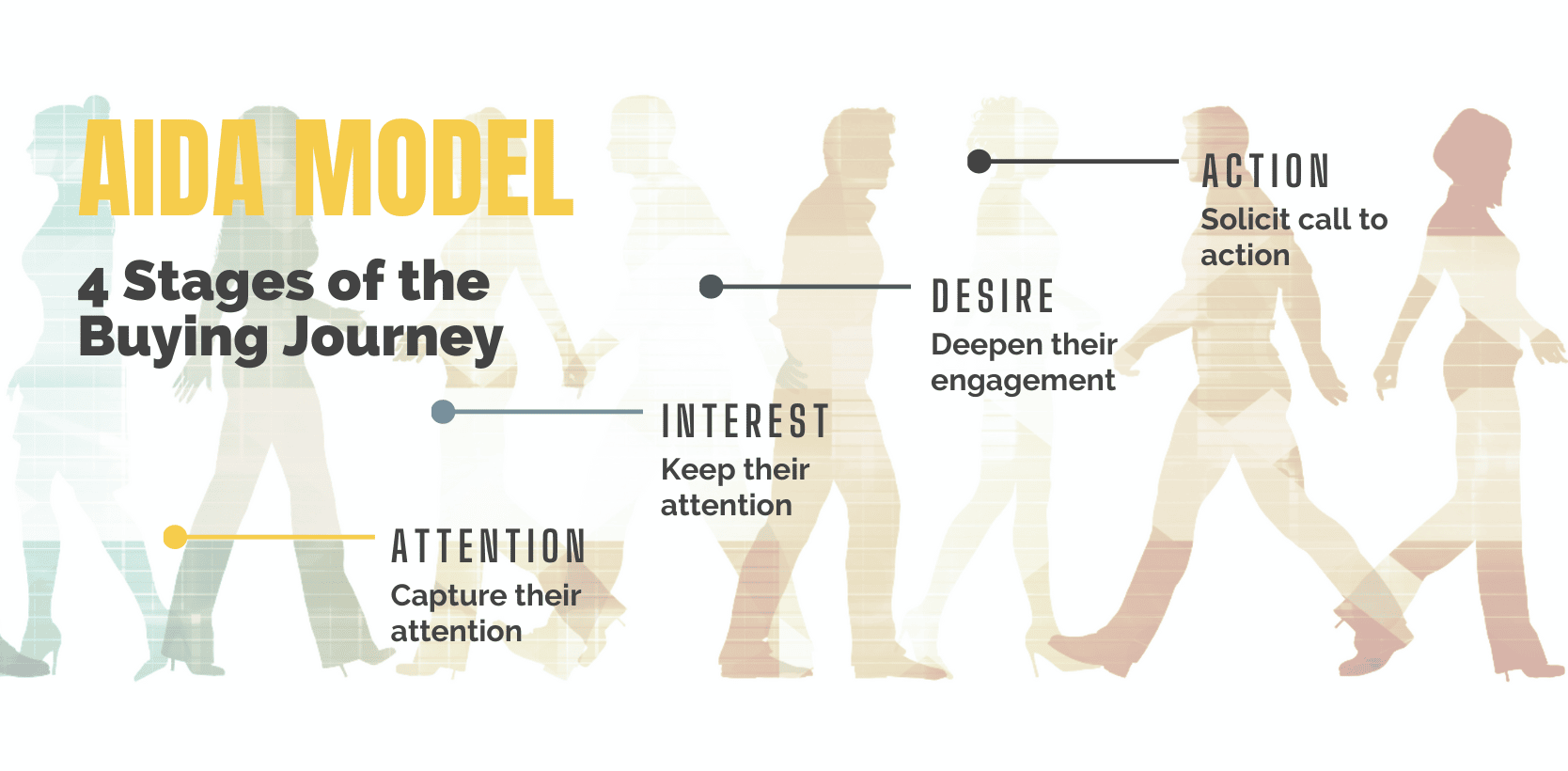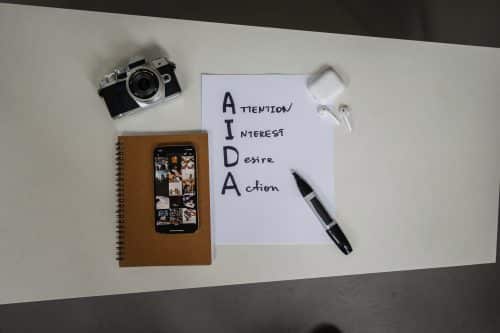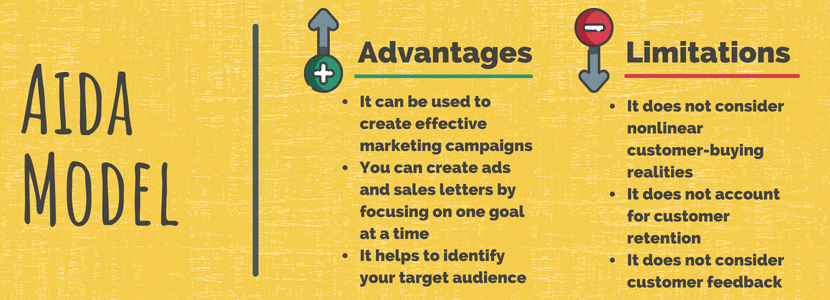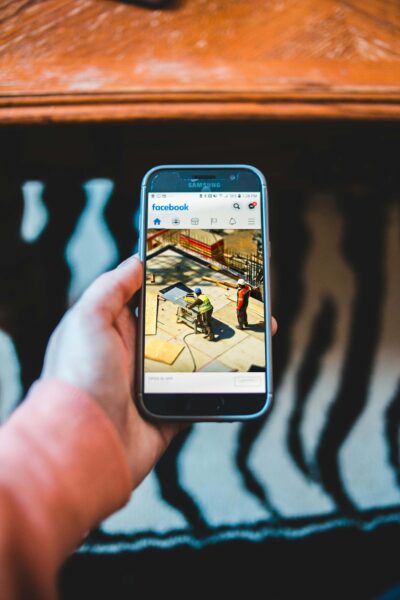Are you striving to be more effective in converting disinterested strangers into loyal customers?
Getting prospective customers who want to use your product or service takes some work. But it’s an essential business activity. This process is often referred to as putting customers through the lead generation funnel.
One of the most common marketing models that brands use to create an effective lead generation funnel is the AIDA model. The AIDA model of marketing is a framework that structures prospects into four phases of purchase: Awareness, Interest, Desire, and Action.
This strategy is used for creating effective marketing and advertising campaigns that promote content to targets based on where they are in the buying cycle.
This article will take you through how the AIDA model of marketing works, provide a real-life example, explain how to use it, and discuss why it is crucial to your lead generation process.
What is the AIDA model of marketing?
Are you still wondering, ‘what is the AIDA model and how to use it?’ As mentioned, the AIDA model of marketing is a framework for creating effective marketing and advertising campaigns, particularly for lead generation funnels.
AIDA is Attention, Interest, Desire, and Action. The overall aim of the AIDA model customer journey is to meet clients where they are in the buying process and provide them with helpful information pertinent to the phase they’re in. This will influence them to move to the next phase of your desired action, such as making a purchase. Here’s how it works:

Attention
The model begins with the Attention stage, where the goal is to grab the attention of the target audience. This phase can be regarded as the top of the lead generation funnel, where the objective is to get as many people as possible to become aware of the product or service being offered.
In this phase, you are trying to show a target audience something they might not have considered previously.
The Attention phase in the AIDA model is especially useful for introducing emerging trends, new product or service features, or new ways of working.
In this stage, you can use questions such as “Did you know…?” to grab your visitor’s attention and help them evaluate whether the topic could be of benefit to them. This will lead them to further evaluation and possibly a purchase decision.
For example, AI writing is a popular trend in 2023 with the emergence of Chat GPT. Not everyone is aware of it and how it can save you time with your content creation.
If I was targeting content writers to use my AI writing tool, a topic like “Did you know that AI Writing Can Help You Write Faster?” could be a great awareness fit to start getting your targets used to this idea.
By asking relevant questions that focus on their needs and interests, you can start a conversation with your visitors about how they can benefit from the trend or feature being offered. Also, providing facts and statistics about how it works or what results it has achieved for others can help to attract attention to the product or service.
Interest
Once the potential customer’s attention has been captured, the next step is the Interest phase. The aim of this stage is to pique the potential customer’s interest about the solution you’re presenting. This can be done by providing more detailed information about what’s being offered and how it can benefit the prospect.
You’ve captured their attention with the bait (the attention phase). Now is the time to reel potential clients in.
The Interest stage can be considered as the middle of the funnel, where the objective is to get potential customers to engage with the product or service, and start to consider it as a solution to their problem or need.
The more detailed your descriptions are, the better. This can include examples such as use cases, the cultural relevance of the product, and other features that demonstrate how this particular product can benefit certain people. Additionally, emphasizing how this product or service solves a problem for potential customers will help them understand its value in more depth.
Thinking back to the AI writing example. If I’m trying to sell copywriters a subscription to my AI tool, I might want to write topics like:
- How to Write a Blog with an AI Writing Tool
- Why AI Writing Tools Make Writing Product Descriptions Super Easy
- How to use AI Writing to Get More Copywriting Clients
Notice that we’re still focusing more on the solution of AI writing itself than selling why our tool is the best fit. This is because buyers first need to see the solution before deciding on the vendor.
Remember, a copywriter has other options like hiring a team of people, just doing the status quo, or outsourcing to a content marketing agency.
If you’re the vendor who helped them find the solution, there’s a great chance you’ll get a chance to be evaluated as the vendor.
Ultimately, your goal in this phase should be to help your visitors evaluate whether the solution you’re presenting is something they want to start looking into investing time or money into.
Desire
The Desire step is where the potential customer starts to develop a desire for the product or service and now needs to start evaluating vendors of that solution. They’re close to making a decision, but not quite there yet.
In this phase, the plan is to get the customer to evaluate if your product or service is the best possible option for them by addressing any specific pain points they have, and using case studies and testimonials to give the customer the push they need.
Your job is to show them why people find your solution is valuable and what benefits they can get out of them.
In this phase, standing out as the best possible solution is key. Your potential customers are likely evaluating multiple solutions in addition to yours at this stage.
So, this is the point at which you show you’re the best fit for them by providing them with your unique value differentiators, that is, what your product or service does differently and which no competitor can replicate (or currently don’t).
The goal in this phase is for visitors to evaluate whether your unique solution is the best fit for them and uniquely suited to solving their problems. Then, they can decide to take the next step by taking action with your business.
It’s important to note that we also want prospects to disqualify themselves if the product is not a fit. If the prospect isn’t a fit, by properly communicating this upfront, you save the customer time involved in reviewing the potential solution or returning a product.
Thinking of our AI writing tool example, our example company has the only tool on the market that can AI write research papers. In this, I’d be looking to target research facilities and universities.
The content should focus on the features that save time and effort in organizing how our tool understands the structure of a research paper and fills in the gaps. “Just enter the information in our form and in 20 minutes you have a research paper.”
A desire-focused landing page for AI research papers would discuss all the features in detail and answer all the FAQs that one could possibly think of, and provide plenty of opportunities to convert, for example, “Try it for Free.”
The prospect might not be ready to buy your solution but they’ll now be able to easily compare it to other solutions on the market.
Action
The Action phase of the AIDA model is when the customer finally initiates your desired action.
In this phase, visitors are viewing your company as their potential preferred solutions provider.
Your main goal is to make it easy for the customer to engage with you by providing information to schedule a meeting, purchase the product, or sign up for the event.
Ease of accessibility is most important. “Schedule a meeting with me” or “Get a Quote” links from your website, or a promotion, such as starting a free trial, are perfect fits for action content to make it easy for your audience to convert.
An AI writing tool might promote ads for pricing comparisons or a link to schedule a meeting with their accounts team to further discuss the solution.
The trick is to make it as easy as possible for a prospect to convert because you never know the exact moment they enter the action phase.
AIDA model example
 Are you still trying to understand how the model works?
Are you still trying to understand how the model works?
Here’s another simple example of the AIDA model of marketing in action.
A certain university in Nashville was interested in keeping in touch with its alumni and seeking donations.
The university had been using students to cold call the same alumni over and over again with diminishing results. The alumni leaders knew that they needed to find a solution to this problem. To improve the efficiency of their outreach efforts, what such universities need is an alumni lead list, which is one of the services our lead gen agency, Take the Stairs, provides.
Here is how you can use the AIDA model to market our alumni lead list building services.
Attention
As discussed, attracting potential customers with attention-grabbing headlines and intriguing sentences is the first step.
For this phase, we used attention getting sentences like:
“Did you know that with lead generation services you can find missing alumni in your database?”
This opener is designed to pique the interest of school administrators by showing them a new and unexplored way of reaching their alumni.
Interest
After attention comes interest.
In this stage, the aim is not only to inform universities of the importance of using an alumni lead list, but to demonstrate the added benefits and highlight the possible potential use cases.
A fitting sentence to generate interest looks like this:
“By using lead gen services to build an alumni lead list, we can find all of the alumni who have become CEOs. You could advertise to them about a donor dinner or other events for high-earning alumni.”
Desire
The goals of the desire stage are twofold. First, we aim to encourage a user to take the desired action—in this case, build an alumni lead list—and, second, choose Take the Stairs as their preferred lead gen agency for the task.
Now that we have informed our audience about how they can use this service, it’s time to show why we are the best.
Here is what we wrote to encourage desire:
“The manual scrubbing process at TTS has us stand out from our competitors as it takes more time to complete but it saves the clients the embarrassment of targeting the wrong people but also decreases ad spend to people who are not within the target audience.”
Action
The aim of the stage is to make it extremely easy for potential customers to consult with us as their potential solutions provider.
To do this, we will promote ads to people who have viewed our Alumni Lead List landing page to schedule a meeting with our sales team.
We’ll want to use copy that gets our audience excited, such as:
“Contact us today to take your outreach efforts to greater heights!”
Putting it all together
When you put it all together, it provides a clear story on how you can help:
“Did you know that with lead generation services you can find missing alumni in your database?
By using lead gen services to build an alumni lead list, we can find all of the alumni who have become CEOs. You could advertise to them about a donor dinner or other events for high-earning alumni.
The manual scrubbing process at TTS has us stand out from our competitors as it takes more time to complete but it saves the clients the embarrassment of targeting the wrong people but also decreases ad spend to people who are not within the target audience.
Contact us today to take your outreach efforts to greater heights!”
The AIDA model can be used for the structure of a pitch, the outline of an email, the types of content you produce (writing, audio, video), and even the ads you promote.
This process can present you as an advisor to your prospective clients instead of a salesman just looking to make a sale.
Advantages of using the AIDA model to drive your funnel

It can be used to create effective marketing campaigns
The AIDA model example is a proven funnel framework. It provides you with a structured approach to guiding potential customers through the journey of becoming a paying customer. Using this framework, you can easily craft engaging content that resonates with consumers at different stages of the lead generation funnel.
You can create ads and sales letters by focusing on one goal at a time
Because you are targeting consumers at different stages of the funnel, the AIDA model customer journey allows you to focus on one goal at a time when crafting ads and sales letters. This strategic process makes it easier to keep things organized and clearly communicate your message.
It helps to identify your target audience
By breaking down the consumer’s journey into stages, the AIDA model helps marketers to identify the target audience and create a message that will resonate with them.
This model almost forces you to think about the stages of the buying cycle for each targeted buyer persona that your company uses.
Are there any limitations to the AIDA model for your marketing purposes?
While the AIDA model is a widely used and effective framework for creating lead generation funnels, it does have several limitations.
It does not consider nonlinear customer-buying realities
One limitation is that the model is focused on a linear progression of steps, where a customer moves from attention to interest to desire to action. However, in reality, the customer journey is often more complex and nonlinear, and may involve multiple touchpoints and interactions with a brand.
For example, a customer might want to buy a product immediately or directly without having heard of it previously. In that case, engaging that particular customer with content meant to attract is not ideal as it does not address his particular demands at that stage.
This can be more difficult to overcome with ads but make sure your content addresses each phase of the AIDA model on any topic you want to be an authority on.
It does not account for customer retention
With the AIDA model customer journey, the major focus is all about getting the customer to purchase a product. However, in today’s world, retaining ideal customers and getting recommendations from them is a key part of business growth and development.
To address this, a more complete model called the AIDAR model, has been proposed. The R in AIDAR stands for Retention.
It does not consider customer feedback
Another limitation is that the model can be seen as being too product-focused, rather than being customer-centric. The AIDA model is primarily focused on selling a product or service, and while your content aims to address the needs of the clients and pain points, you don’t always hit the mark.
In today’s digital age, customers are better informed and more skeptical than ever before. So it’s crucial for businesses to also focus on building trust and relationships with customers. How? By following up, inviting or requesting feedback, and, for larger companies, by using efficient customer relation management (CRM) systems.
Make sure that you’re inviting feedback from your customers and followers around the content that they want to see, as well as considering and taking action on that feedback.
Are you ready to take your business to the next level and talk with an experienced marketing agency about using the AIDA model?
Attracting ideal customers is the core objective of any marketing strategy. The AIDA model is one of the oldest and proven frameworks for turning strangers into customers.
Take the Stairs is a Nashville-based B2B lead gen company with the resources you need to more effectively find the right customers for your Nashville business.
Our team of experts specializes in using the AIDA model to create effective lead generation funnels that drive results. Contact us today to learn more about how we can help your business thrive!




